It could very well be a common thread to mail-order film cameras and lens enthusiasts to find one, tucked away in the far corner of the dry box, or placed in storage, an item that does not seem to fit right into the scene the first time you received it. I have one as well, a Tamron Adaptall-2 70-210mm F4~5.6 (58A/158A), a compact close-focus zoom lens, which I have kept aside due to a couple of minor issues.
The 58A came in through the mail quite a while back attached to a body which was what I was really after. As the additional cost for the lens, except for the additional freight weight, was almost negligible, the offer was a steal.
Though it came without a hood, which I believe is an optional extra, the lens was already fitted with the Adaptall-2 fitted for the body it came with. The Adaptall-2, as you know, is a prerequisite for mounting the lens to a specific camera brand, and is an additional cost if acquired separately.
While the exterior of the unit is spick and span and looks as clean as the body it came with, the glass elements were something else. One of the inner elements has a thin layer of fungus growth spread across its face, and the inner of the front element seems to have a form of halo haze on its edge, leaving the center portion clean and clear.
It was not until I took the lens out of the storage, as I was to write this review that it dawned on me how compact and portable the Tamron Adaptall-2 70-210mm was. For a 70-210mm zoom, the push-pull design measures only 79mm deep and is a pure lightweight at a mere 349 grams.
Tamron 70-210 adaptall
Uploaded by ayhan pek on 2017-03-18.
Add that to the feature that at the extreme end of the zoom, at 210mm focal length, the 58A is capable of taking 1:4 macro scale pictures. That was the motivation for me to get a bit more serious about the lens and to find out how well it performs.
Design and Build
The Tamron 58A is said to be the lowest-cost lens produced by Tamron. In production from 1988 to 1991, it could very well be one of the last Adaptall lenses. For the price it was offered, the lens is extremely compact, perhaps the most compact zoom of its specifications.
Constructed of 13 elements in 9 groups, and plastic-bodied, the lens is still reminiscent of one built with quality workmanship, feels firm and solid in the hand, and is extremely agile with an amply sized focus ring that is (and mine still is) glide smooth.
The push-pull zoom action has just the right stay to stop the zoom from creeping but is light enough for the push or pull. Manipulating the soft but clicky aperture ring with your thumb and the middle finger is just as flexible. For a lens that was produced in the late '80s, its agility, and ease of use are quite an understatement.
On The E-P5
Mounting the 58A on the Pen E-P5 was an alternative of two choices - mount the 58A which came with a Minolta MD Adaptall-2 to an MD to M4/3 adapter before mounting it onto the E-P5, or secondly, replace the MD Adaptall-2 with an OM version before mounting it on E-P5 via the Olympus OM Adapter MF-2.
Since I have both Adaptall-2s at hand and wish to go for an OEM solution, I opted for the second solution. The fit was tight and firm as it should be, with absolutely no play or movement at all between the connectors.
Compacted, the 58A has a similar form factor to the S Zuiko 35-70mm F4, but is lighter at 349 grams (compared to the Zuiko's 380 grams) and is about 15mm slimmer on the circumference.
On the 2x crop-sensor Olympus Pem E-P5, the 58A is the equivalent of a 140-420mm zoom lens, the long end of which is right into the super-telephoto category.
Extended to its full macro setting, with the lens mounted on the Olympus OM Adapter MF-2, the lens protrusion from the E-P5 body is almost 300mm.
The extended length of the lens does not deter, however, from the fact that the lens is light and nimble enough to be used handheld, and with the support of a lean against a wall, images across the zoom range, as shown here, are a delight to capture.
Despite all the attritions that came with my unit, the fungal infection, and the halo haze, I was completely delighted with the clarity and sharpness of these images, shot at F8, with the slightly strong contrast and all.
Against the odds, and adverse comments on the review columns, you may want to consider, if you can get a good copy, the 58A as a good alternative for the rainy day, a super-compact 210mm zoom in your jacket pocket for hiking, or as a keep in your camera bag.
Walking The Zoom
Macro Shots
Handholding the camera with the lens fully extended and the focus down to the closest 1.1-meter mark may not be the best solution for macro shots. The macro magnification ratio is 1:4.
Camera shake and unsteady hands may end up getting you blurred images. You might want to rest the camera/lens setup on a bean bag support, or if you are confident enough, a tripod.
Early Images
It was a lovely day, the sun was bright, culumus clouds were drifting majestically across the sky...
I had the camera mounted on a tripod for this shot of the new moon, which was (visually) creeping towards the bright shine of a stationary satellite, a permanent feature of the night sky in our location.
This was a first for me. My concern has always been whether legacy zoom lenses that are too heavy or extend too far out from the camera body can be safely supported by the camera tripod mounting. The pivotal strain imposed by the equipment is the crucial factor in determining the strength of the mount.
The shot was taken at F16 1/2.5 sec with ISO setting at 1600.
A couple more shots, both at full zoom, one of the corn patch just across the road, and the other of a gate light slightly further down the road, and I am confident that a good copy of this lens might be a competent standby, if not for the keep, in your camera bag.
These images were shot in *ORF RAW, edited on Olympus Viewer 3 (OV3), and print sharpened on Google NIK Sharpener Pro 3.

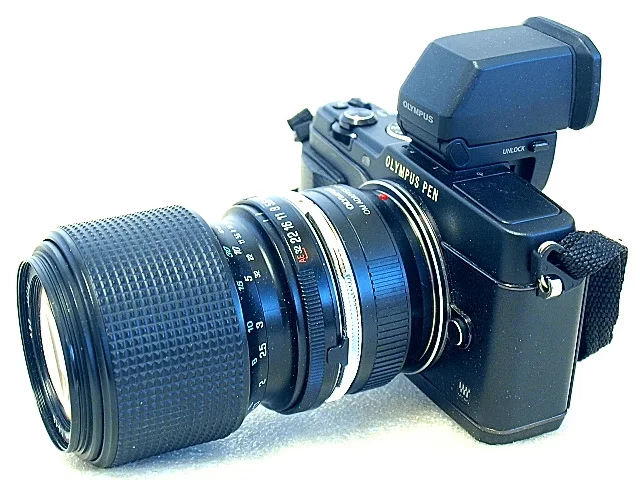
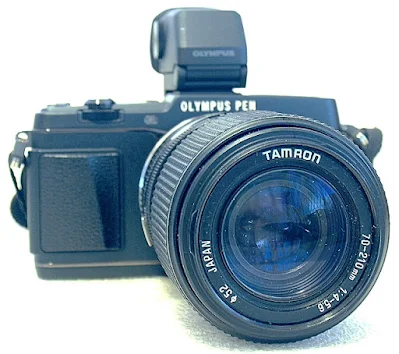





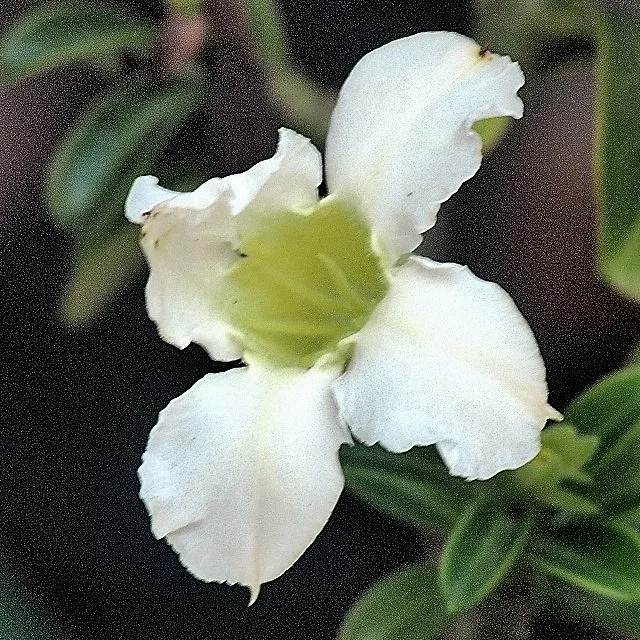

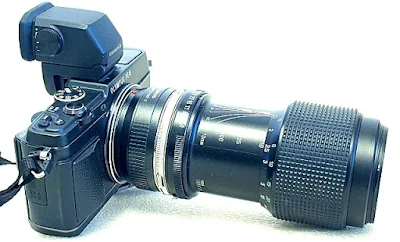

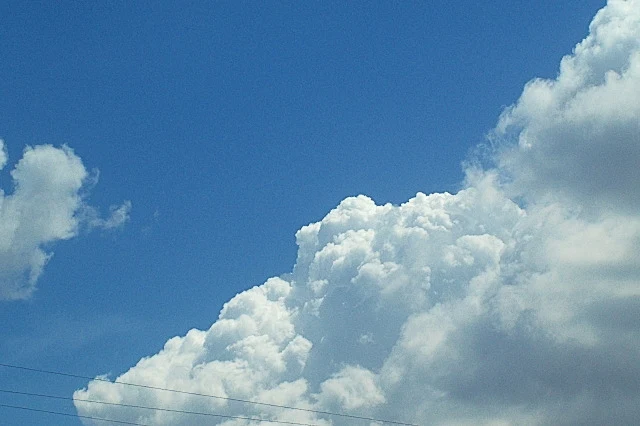
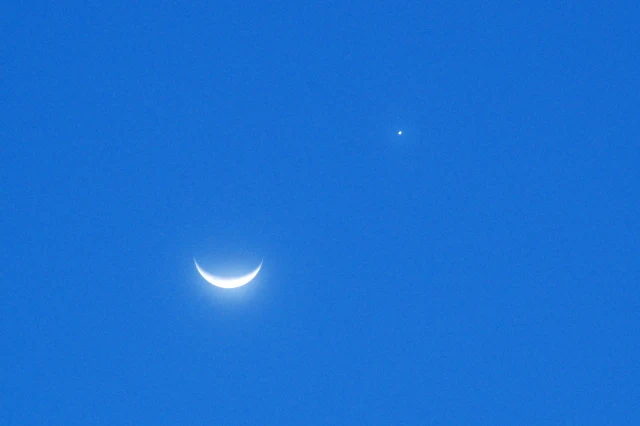
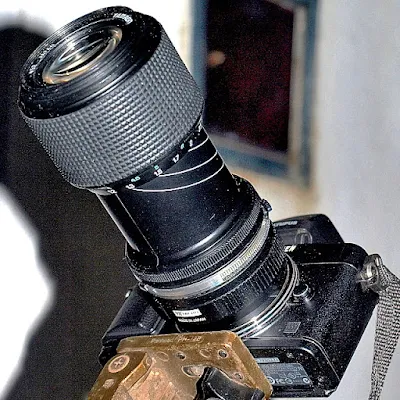
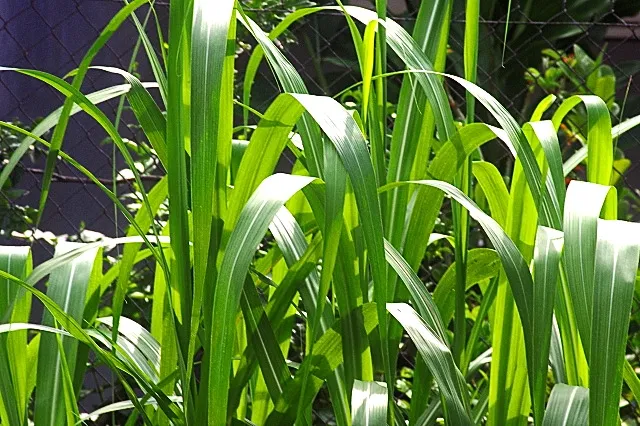

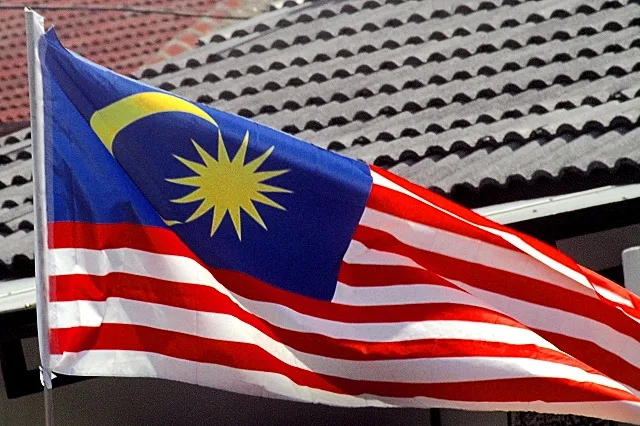











No comments:
Post a Comment